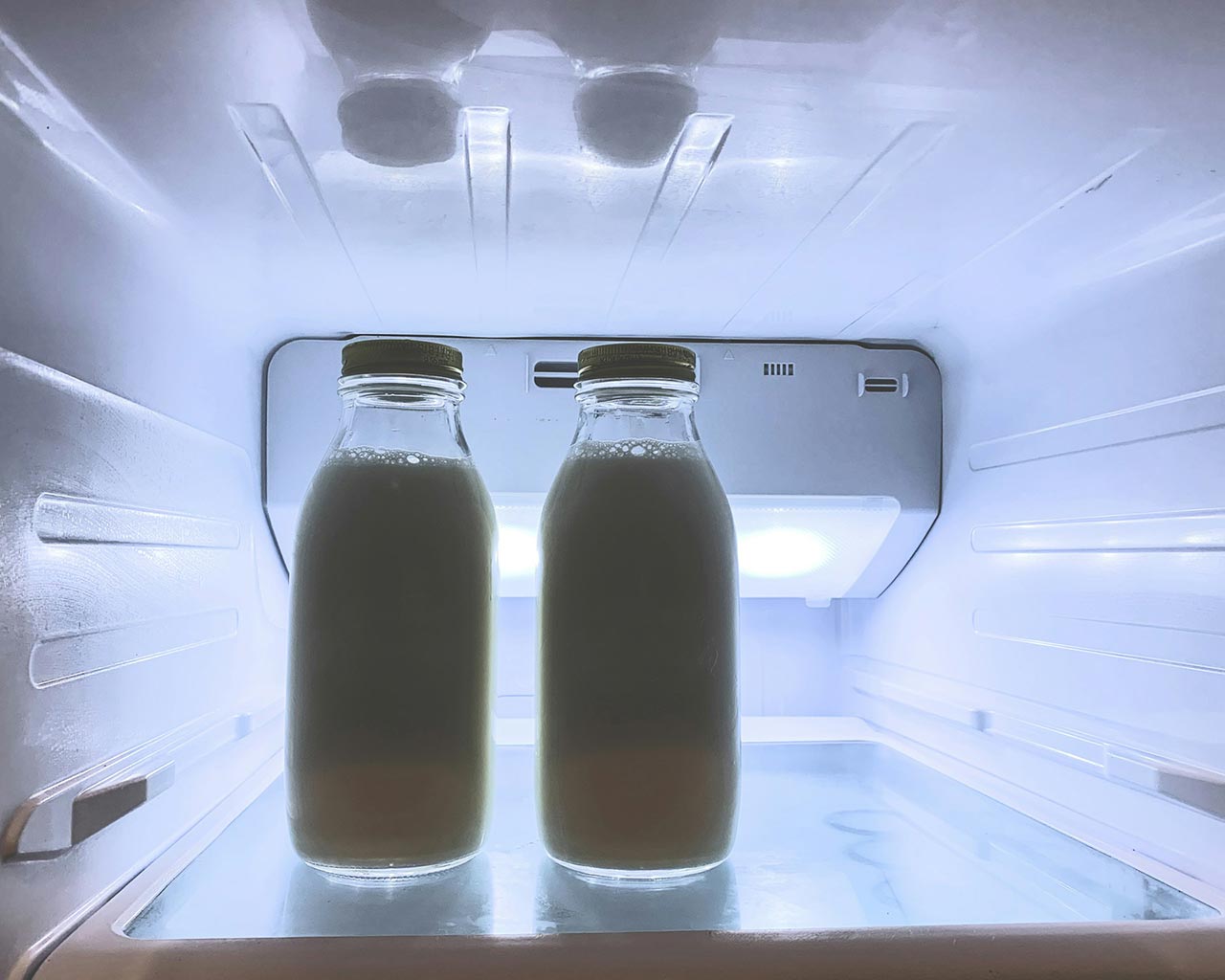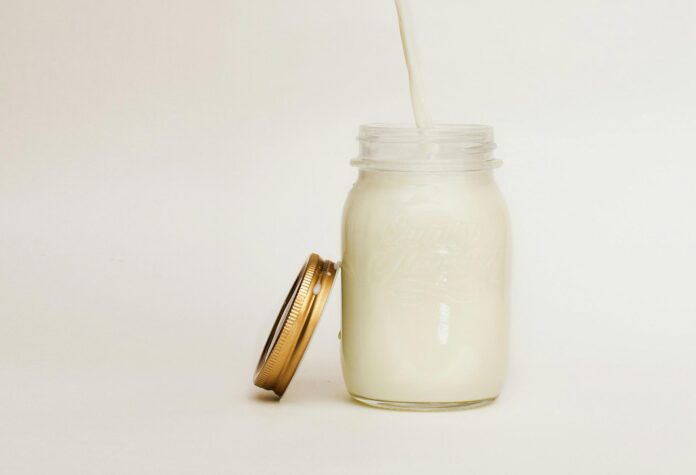When does evaporated milk go bad? Have you ever found a can of evaporated milk tucked away in your pantry and wondered if it’s still good to use? You’re not alone.
Understanding the shelf life and spoilage signs of evaporated milk can save you from the disappointment of having to throw it away and, more importantly, keep you safe from consuming something that could be harmful.
So, in this article, we will be answering all your questions about evaporated milk, including how long it lasts, how to store it properly, and how to tell if it’s gone bad.
Whether you’re a baking enthusiast or just someone who likes to be prepared, we’ll answer all your questions in simple terms. So, when does evaporated milk go bad? Let’s find out!
Table of Contents
First, What is Evaporated Milk?
Before we go into the nitty-gritty of the article, let’s first get familiar with what evaporated milk is. That way, you will have a better understanding of what we are talking about in case you stumbled upon this post by accident.
Evaporated milk, also known as unsweetened condensed milk, is a form of concentrated milk that is created by removing about 60% of the water from regular milk. This process results in a thicker, creamier milk that is not only rich in flavor but also has a longer shelf life than its fresh counterpart.
Unlike sweetened condensed milk, evaporated milk doesn’t contain added sugar, making it a versatile ingredient in both sweet and savory dishes. It’s commonly used in baking, cooking, and even as a creamer in coffee.
Now that you know what evaporated milk is, let’s delve into how long you can keep it and the signs to look out for to determine if it’s gone bad.
When Does Evaporated Milk Go Bad – What is the Shelf Life?
Evaporated milk, with its reduced water content, boasts a significantly longer shelf life compared to regular milk. When unopened and stored properly in a cool, dry place, a can of evaporated milk can last from 6 to 12 months past the date printed on the label.
However, this is just a general guideline, and it’s not uncommon for it to remain safe and usable even beyond this timeframe if the can is undamaged and stored under ideal conditions.
Once opened, the shelf life of evaporated milk changes drastically. It needs to be transferred to an airtight container and refrigerated if not used immediately. Under refrigeration, opened evaporated milk can last between 3 to 5 days.
The key to maximizing its shelf life once opened is ensuring it’s kept in a container that limits its exposure to air, which can accelerate spoilage. We will talk more about this in the later section of this post. Just keep reading!
How Can You Tell If Your Evaporated Milk Is Bad?

Now that we have answered the question, ‘When does evaporated milk go bad?’ let’s talk about some signs of spoilage.
Really, knowing when to throw out evaporated milk can save you from an unpleasant taste experience or, worse, food poisoning. So, here are some clear signs that your evaporated milk has spoiled:
Off-Smell
Fresh evaporated milk has a mild, sweet smell. If your milk emits a sour or unpleasant odor, it’s a clear indication that it has gone bad. Trust your nose; if it smells off, it’s best to discard it.
Change in Color
While fresh evaporated milk has a light cream color, any discoloration, such as a yellowish or brown tint, suggests spoilage. Changes in color are often a sign of bacterial growth.
Texture Changes
Evaporated milk should have a smooth, consistent texture. If you notice any lumps or if the milk has become thick and gooey, it’s a sign that it’s no longer good to use. Clumping occurs when the milk proteins denature and coagulate, which is a common sign of spoilage.
Taste Alteration
If you’re unsure based on smell or appearance, a small taste can confirm spoilage. Spoiled evaporated milk will have a distinctly sour or off flavor. However, tasting should be your last resort due to the risk of ingesting harmful bacteria.
Can Integrity
Before even opening a can of evaporated milk, check its integrity. If the can is bulging, leaking, rusting, or has severe dents, it’s best to err on the side of caution and discard it.
These signs can indicate bacterial growth inside the can, leading to gas production and the aforementioned physical changes.
How Do You Keep Evaporated Milk from Spoiling – Best Storage Practices
Proper storage is key to preserving the quality and safety of evaporated milk. So, let’s quickly show you some best practices you can employ to make sure your evaporated milk stays fresh for as long as possible.
- Store Unopened Cans in a Cool, Dry Place: To maximize the shelf life of unopened evaporated milk, keep it in a pantry or cupboard away from direct sunlight and heat sources. A stable, cool environment helps prevent the degradation of the milk.
- Refrigerate After Opening: Once you open a can of evaporated milk, transfer any leftovers to an airtight container and refrigerate immediately. Exposure to air can accelerate spoilage, so it’s important to seal it well.
- Use Clean Utensils: When pouring or scooping out evaporated milk, always use clean utensils. Introducing bacteria from used spoons or cups can contaminate the milk, leading to faster spoilage.
- Label and Date the Container: After transferring evaporated milk to another container, label it with the opening date. This helps you keep track of how long it’s been stored and ensures you use it within its safe consumption window.
- Freeze for Long-Term Storage: If you don’t plan on using your opened evaporated milk within a few days, consider freezing it. Pour the milk into a freezer-safe container, leaving some space for expansion.
- Frozen evaporated milk can last for up to three months. Thaw it in the refrigerator and shake well before use, as separation may occur.
- Avoid Temperature Fluctuations: Repeatedly moving evaporated milk from a cold to a warm environment can promote bacterial growth and spoilage. Try to maintain a consistent temperature for storage.
How Long Does Evaporated Milk Last After Opening?
Once opened, the shelf life of evaporated milk is considerably shorter compared to when it’s unopened. Proper handling and storage are crucial to maximize its freshness and safety post-opening. Here are the guidelines you should follow:
In the Refrigerator
Opened evaporated milk should be transferred to an airtight container and stored in the refrigerator immediately. When stored correctly, it can last for about 3 to 5 days.
The cool temperature of the refrigerator slows down bacterial growth, helping to preserve the milk for a few days after opening.
In the Freezer
If you need to extend the life of your evaporated milk beyond a few days, freezing is a viable option. When stored in a freezer-safe container, leaving some space for expansion, evaporated milk can last for up to three months.
However, note that freezing may cause some separation of the milk’s components, so it’s best used for cooking or baking rather than as a drink or creamer after being thawed.
Is it OK to Use Expired Evaporated Milk?
The question of whether it’s safe to use expired evaporated milk depends on several factors, including how the milk has been stored and its condition upon inspection. Here’s what you need to know:
Best Before vs. Expiration Dates
The date you see on a can of evaporated milk is often a “best before” or “use by” date rather than a hard expiration date.
This date is the manufacturer’s estimate of when the milk will remain at its peak quality. Evaporated milk can remain safe to consume beyond this date, especially if it has been stored properly and the can is undamaged.
Storage Conditions are Key
Unopened evaporated milk stored in a cool, dry place can last 6 to 12 months past its “best before” date without significant loss of quality or safety. However, this extended shelf life is contingent on ideal storage conditions and an intact can.
Inspect Before Using
If your evaporated milk is past its “best before” date, conduct a thorough inspection before using it. Look for signs of spoilage such as the ones we mentioned above. If the can is bulging, leaking, rusting, or severely dented, it’s best to err on the side of caution and discard the milk.
Safety First
When in doubt, throw it out. It’s better to be safe than sorry, especially when it comes to consuming dairy products that are past their “best before” date.
The risk of foodborne illness increases with time, so if you’re unsure about the safety of the milk, it’s advisable not to use it.
What’s the Difference Between Evaporated Milk and Condensed Milk?
Although they might appear similar at first glance, evaporated milk and condensed milk are two distinct products with unique properties and uses in cooking and baking. So, what sets them apart?
- Sugar Content
The most significant difference between evaporated milk and condensed milk is the sugar content. Condensed milk, also known as sweetened condensed milk, has sugar added, making it thick, sweet, and syrupy. Evaporated milk, on the other hand, is unsweetened, preserving the natural flavor of the milk without the added sweetness.
- Texture and Consistency
Due to the added sugar, condensed milk has a much thicker consistency and a richer texture than evaporated milk. Evaporated milk is more similar to the texture of regular milk, albeit slightly creamier due to the reduction in water content.
- Usage in Recipes
Their differences in sweetness and texture make evaporated and condensed milk suitable for different culinary applications. Evaporated milk is often used as a dairy base in soups, sauces, and coffee, where it adds creaminess without excessive sweetness.
Condensed milk is a popular ingredient in desserts and sweet dishes, such as pies, cakes, and sweetened beverages, where its sugar content and thick texture are desirable.
- Nutritional Content
The addition of sugar in condensed milk not only affects its taste and texture but also its nutritional profile. Condensed milk is higher in calories and sugars compared to evaporated milk, making evaporated milk a preferable option for those looking to reduce their sugar intake.
What Can I Use Instead of Evaporated Milk?
If you’re out of evaporated milk or prefer an alternative, there are several substitutes you can use depending on the recipe.
Heavy cream or half-and-half can provide a similar creamy texture for soups and sauces, though they are higher in fat. For a lower-fat option, regular milk can be gently simmered until reduced by about 60% to mimic the consistency of evaporated milk. Non-dairy options include almond, soy, or coconut milk, which can be reduced in the same way.
Can I Freeze Evaporated Milk?
Yes, you can freeze evaporated milk, though it may experience a slight change in texture upon thawing. Freezing is a practical option for extending its shelf life beyond the refrigerator’s limits.
Pour the evaporated milk into a freezer-safe container, leaving some space for expansion. It can be stored in the freezer for up to three months. Keep in mind that once thawed, the milk might separate or become grainy, but this does not affect its safety or nutritional value.
A good shake or stir after thawing can help restore some of its original consistency, making it suitable for cooking and baking purposes, even if it might not be ideal for direct consumption or use as a creamer.
















